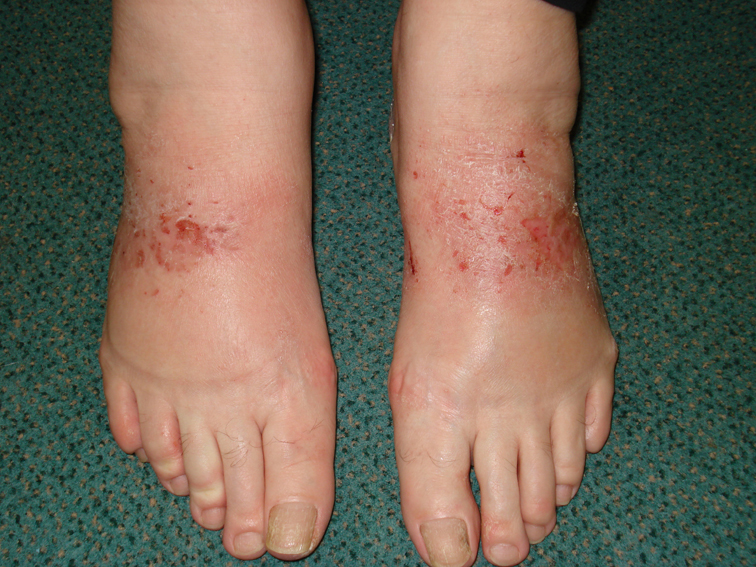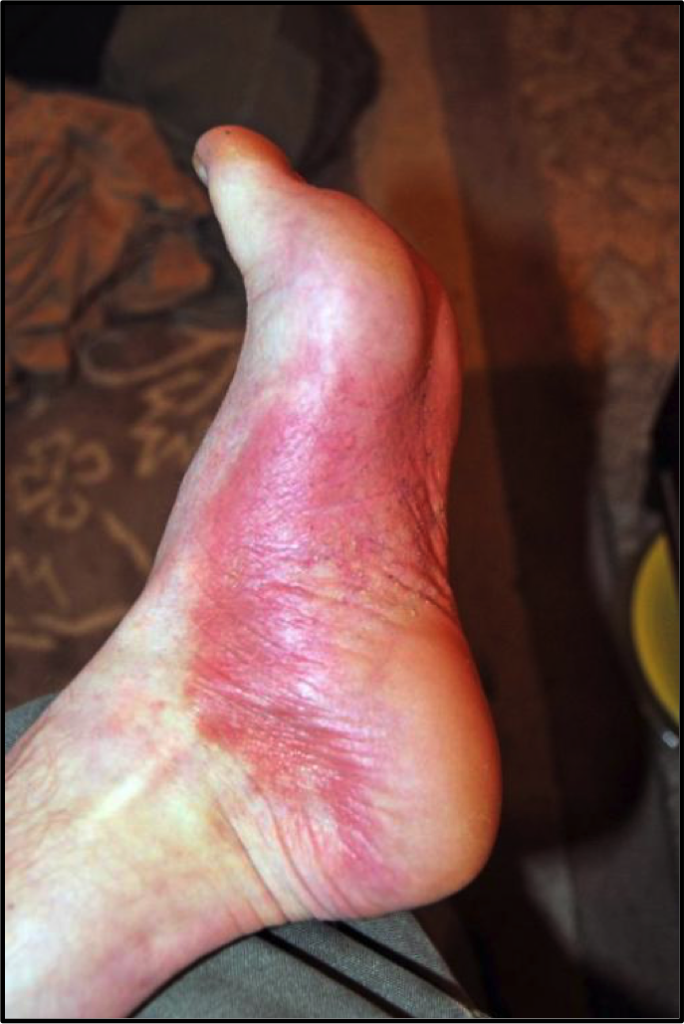
Keeping this in view, what does venous stasis dermatitis look like? It can be due to a contact dermatitis (allergic or irritant) or atopic dermatitis.

Symptoms can vary considerably, from patches of mild itchiness and dry skin, to widespread areas of very sore or broken skin.
What does dermatitis look like on feet. Symptoms of venous stasis dermatitis. Allergens (smoke, mold, dust, dander, cleaning products, etc.) foods high in sugar and carbs. Inner elbows, neck, knees, ankles, feet and around the eyes.
People with stasis dermatitis usually experience swollen legs and feet, open sores, or itchy and reddish skin. Some common causes of yeast dermatitis and ear infections in dogs include: Videos (0) hand and foot dermatitis is a dermatitis affecting the hands and/or feet.
It can also help to try and identify what might be triggering outbreaks, such as certain skin. As many children get older, the frequency and severity of symptoms lessen until the condition may seem to be gone. What is dermatitis and what does it look like?
Small blisters on the palms or side of the fingers. Atopic dermatitis is the most common form of eczema. Each type of dermatitis tends to occur on a different part of your body.
If stasis dermatitis goes untreated, swelling can move beyond the ankle to the calf and skin can become shiny. Also known as dishydrosis or pompholyx, dyshidrotic foot eczema causes tiny, deep blisters to develop on the soles and sides of the feet and the palms of your hand. One theory is that a protein called fibrinogen may be responsible for the changes you see in your skin.
Stasis dermatitis occurs when varicose veins or other circulatory conditions cause fluids to build up in the lower legs. How do you get rid of yeast smell. Seborrheic dermatitis and cradle cap are.
When it affects just the feet it is called pedopompholyx. A heavy or achy feeling after long periods of sitting or standing. Other symptoms that will usually occur with stasis dermatitis include:
It often starts on the inside of the ankles, but can appear anywhere on the lower legs. Dermatitis may also be found on the sole, the side of the feet and heels and the legs. May include swelling, redness, blisters or cracks in the skin, burning, itchiness and pain.
It affects infants and young children, but it can also continue later into life. With autoimmune conditions, the body mistakenly attacks itself. Sore (to the point of skin breaking down in open.
1 for the prevention of atopic dermatitis, doctors recommend that patients keep the skin well moisturized. Beside above, can you get rid of stasis dermatitis? Dermatitis herpetiformis is an intensely itchy, blistering rash that affects some people with celiac disease.
Keeping this in view, what does venous stasis dermatitis look like? A unique feature of hand and foot dermatitis is that it commonly first manifests with tiny vesicles and is then called. Poison ivy, poison oak, and poison sumac.
An itching or burning feeling around the blisters. Doctors don’t know exactly what causes it, although stress can be a trigger. Socks lined with roughly woven or seamed fabric can be hard on your skin.
Also known as scalp eczema or dandruff, this is a chronic condition in which white or yellow scaly patches of skin develop in oily areas, such as the scalp, the face, the. The swelling produces pressure beneath the skin and prevents adequate blood and oxygen from reaching the skin. Symptoms of contact allergic dermatitis.
Skin cracking and ulcerating overtime causing open sores that can be painful and heal very slowly. Normally, this will take the form of rough patches on the backs. What does yeast dermatitis look like on a dog what causes yeast dermatitis in dogs?
One theory is that a protein called fibrinogen may be responsible for the changes you see in your skin. It can be due to a contact dermatitis (allergic or irritant) or atopic dermatitis. Your skin can also take on a thin, papery look.
Symptoms of dyshidrotic eczema include: What does dermatitis look like on feet? Celiac is a condition in which gluten, a protein found in some grains, triggers an autoimmune response.
These blisters can occur on the fingers, hands, toes, feet. Symptoms can vary considerably, from patches of mild itchiness and dry skin, to widespread areas of very sore or broken skin. It often causes scaly patches, skin discoloration, and dandruff.
What does stasis dermatitis look like? Manifestations are erythema, scaling, and skin thickening. Varicose eczema or venous dermatitis can cause the skin to become irritated in a variety of ways.
Small blisters on the soles of the feet. Dermatitis neglecta is caused by a lack of personal hygiene, often in one area of the body that is difficult to reach or painful to wash. People with stasis dermatitis usually experience swollen legs and feet, open sores, or itchy and reddish skin.
“dermatitis” is a word used to describe a number of skin irritations and rashes caused by genetics, an overactive immune system, infections, allergies, irritating substances and more. There is no cure for atopic dermatitis, but there are things you can do to prevent outbreaks, and treatments are available for when outbreaks happen. What socks are best for eczema?
When a person has stasis dermatitis their skin will usually darken and appear to have a reddish brown discoloration. Allergic contact dermatitis causes include: Accordingly, what does venous stasis dermatitis look like?
Rash on swollen skin that varies in color depending on your skin color. Signs and symptoms may include: Atopic dermatitis is recurrent, and children with atopic dermatitis have symptoms that come and go.
This type of dermatitis is most common on the scalp, though it can also occur on the face, chest, and around the ears. In this case, the small intestine is the target. An underactive or overreactive immune system.
What does eczema on bottom of feet look like? Increased risk of developing contact dermatitis. Swelling around ankles and lower legs
The first sign of dyshidrotic eczema is intense itching of the soles of the feet, sides of the toes and. Open sores, called venous ulcers, can form on the lower legs and tops of feet.